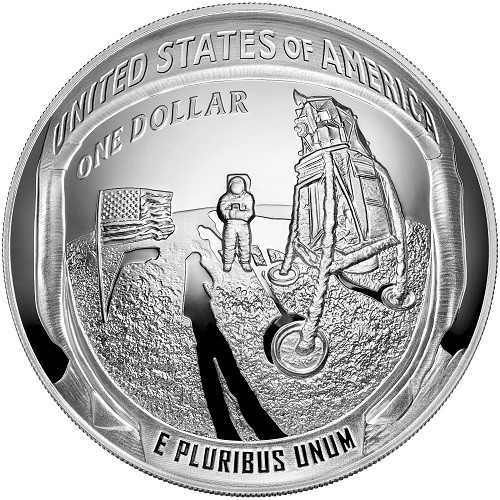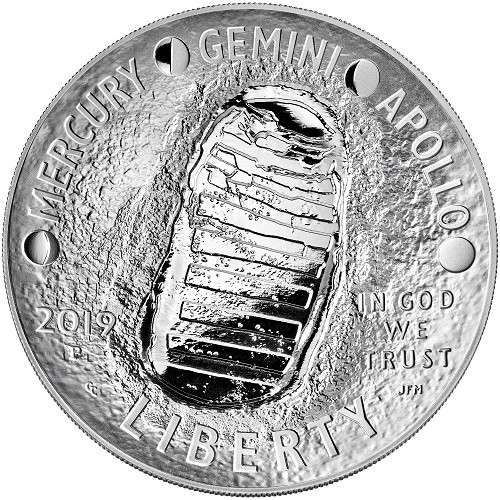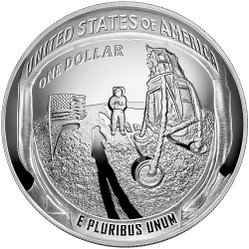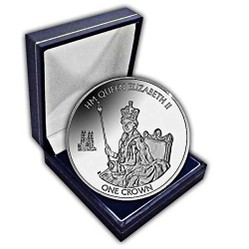The Apollo 11 Commemorative Coin Program celebrates the fiftieth anniversary of the first landing of a manned vehicle on the moon. This moon landing was the culmination of work initiated by President John F. Kennedy well after his death.
This year, 2019, marks the fiftieth anniversary of the successful mission. The landing occurred on July 20, 1969.
The obverse of the coin design shows the image of a deep footprint in the fine dust of the lunar surface. The coin pays tribute to the Mercury, Gemini, and Apollo space programs, a series of programs that evolved into the ability of the United States to achieve the success. The three space program names are inscribed on the top of the obverse. The bottom of the obverse has the word Liberty inscribed. The left side of the obverse contains the year of issue, 2019. The right side contains the words on modern coins of the United States, In God we trust.
The reverse of the coin shows the close-up of the helmet and visor of Buzz Aldrin that reflect the flag, astronaut Neil Armstrong, and the lunar lander.






 The Linear Equation and Related Equations and Inequalitieson 08/15/2024
The Linear Equation and Related Equations and Inequalitieson 08/15/2024
 Understanding Calculus: A Simplified Approach to Derivativeson 08/05/2024
Understanding Calculus: A Simplified Approach to Derivativeson 08/05/2024
 Limits: Vital Building Blocks of Calculuson 08/01/2024
Limits: Vital Building Blocks of Calculuson 08/01/2024
 Mardi Gras Collectibleson 02/02/2023
Mardi Gras Collectibleson 02/02/2023


Comments
The two varieties allow the mint to charge a higher premium for the proof coins, but there is a higher expense in keeping the dies polished and replaced more frequently, and minting with a greater press pressure. The 0.900 is the United States coin standard, but is far behind the 0.925 the United Kingdom Sovereign, and the 0,9999 and 0.999 standards for other United Kingdom gold, and gold from Canada and from Australia, among others. When Canada went to 0,999, then to 0,9999, many other mints adjusted, but not the "behind the times" United States Mint. The appeal of United states gold and silver coins minted with lower purity is high in the United States, but probably not so competitive elsewhere.
blackspanielgallery, Thank you for the practical information and product lines. Why is it that "The five-dollar gold coin comes in two varieties, proof and uncirculated. The gold coins have a purity of 0.900, which is less than the 0.925 required of twenty-two karat gold"? Is it because of West Point mint budgets or preferences?